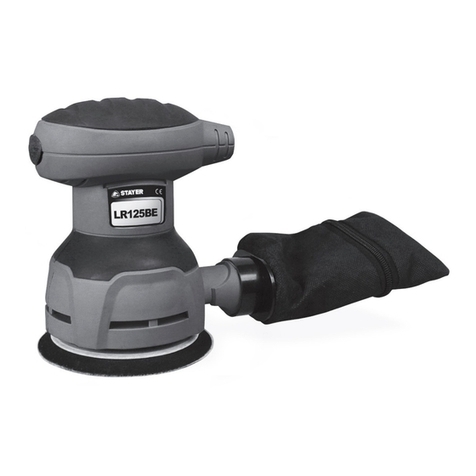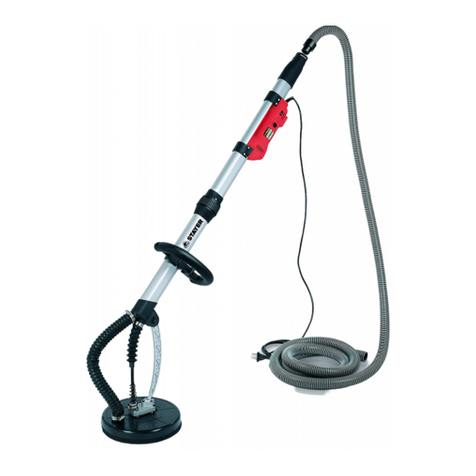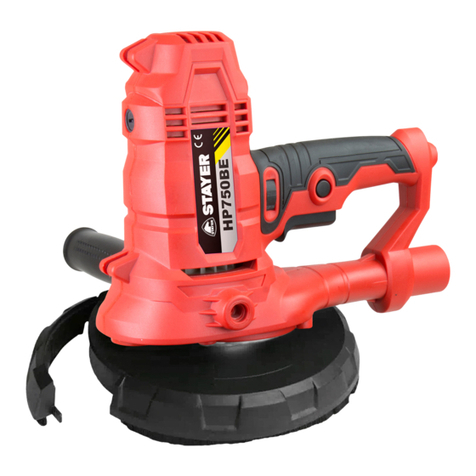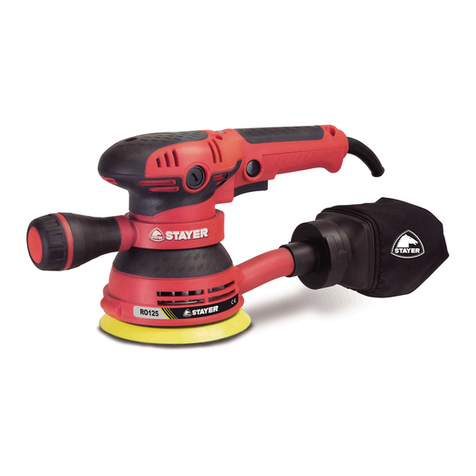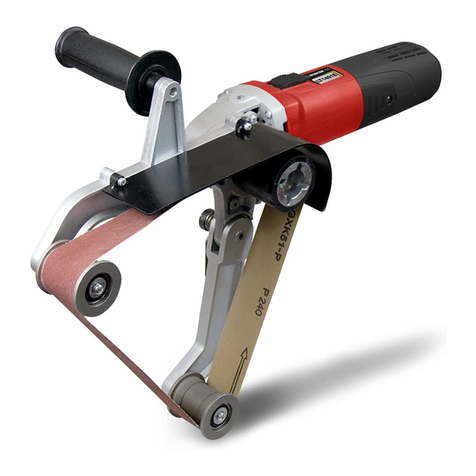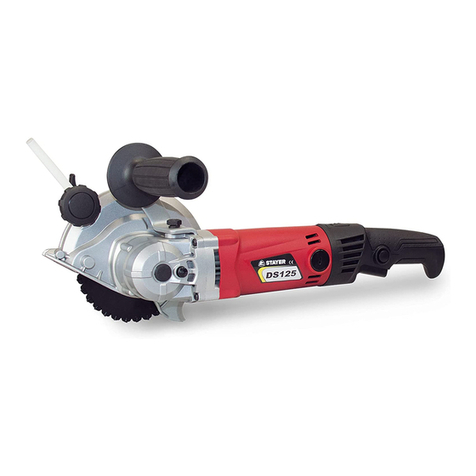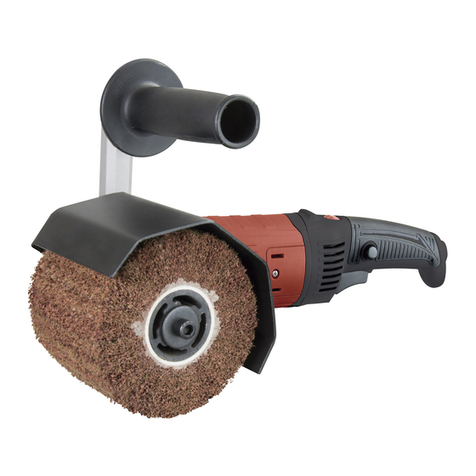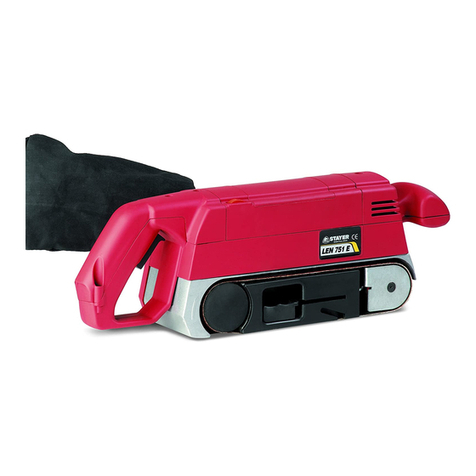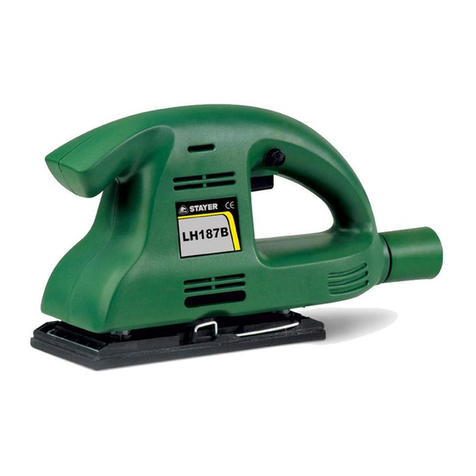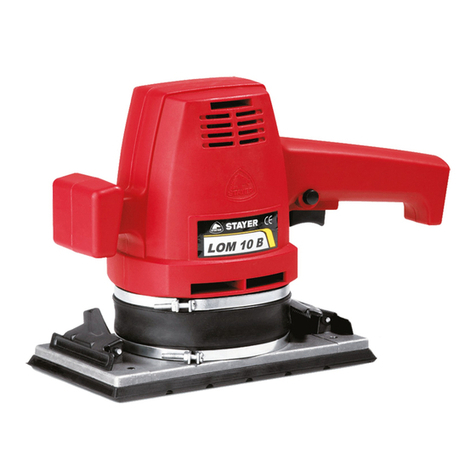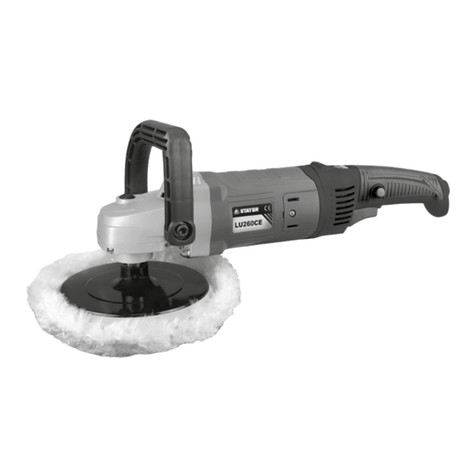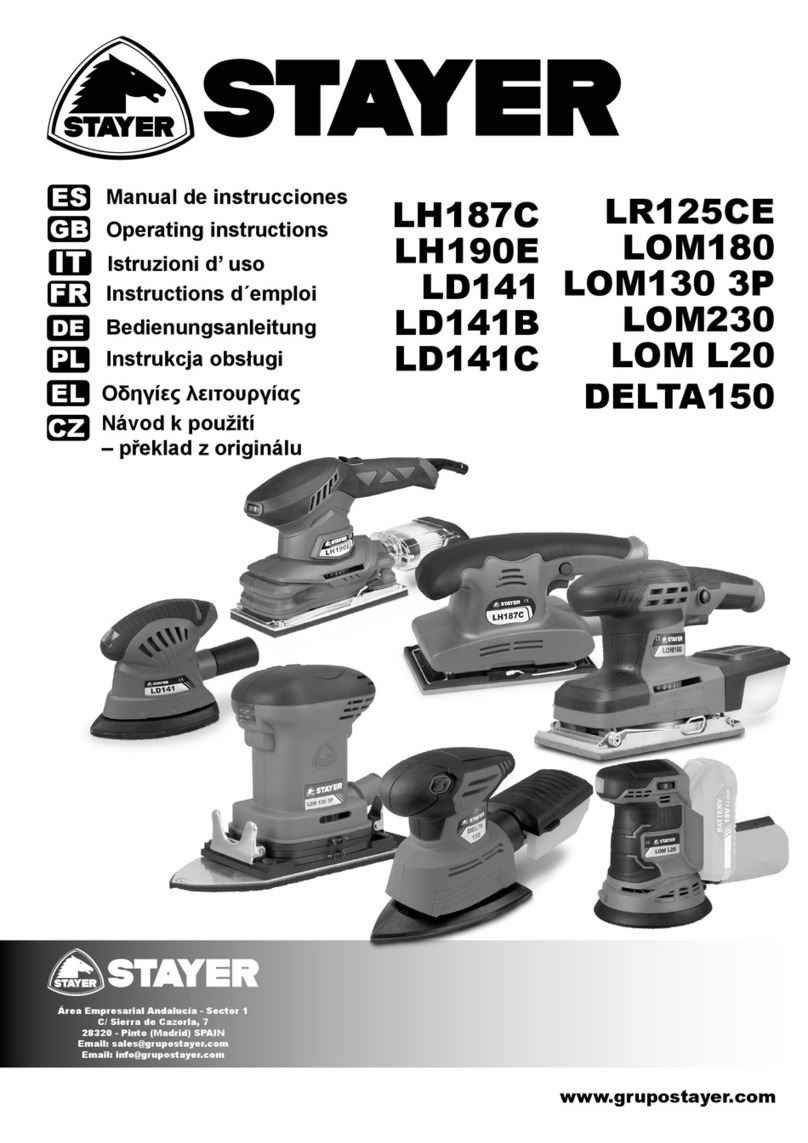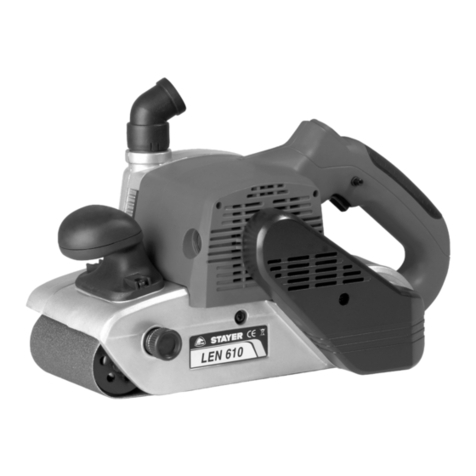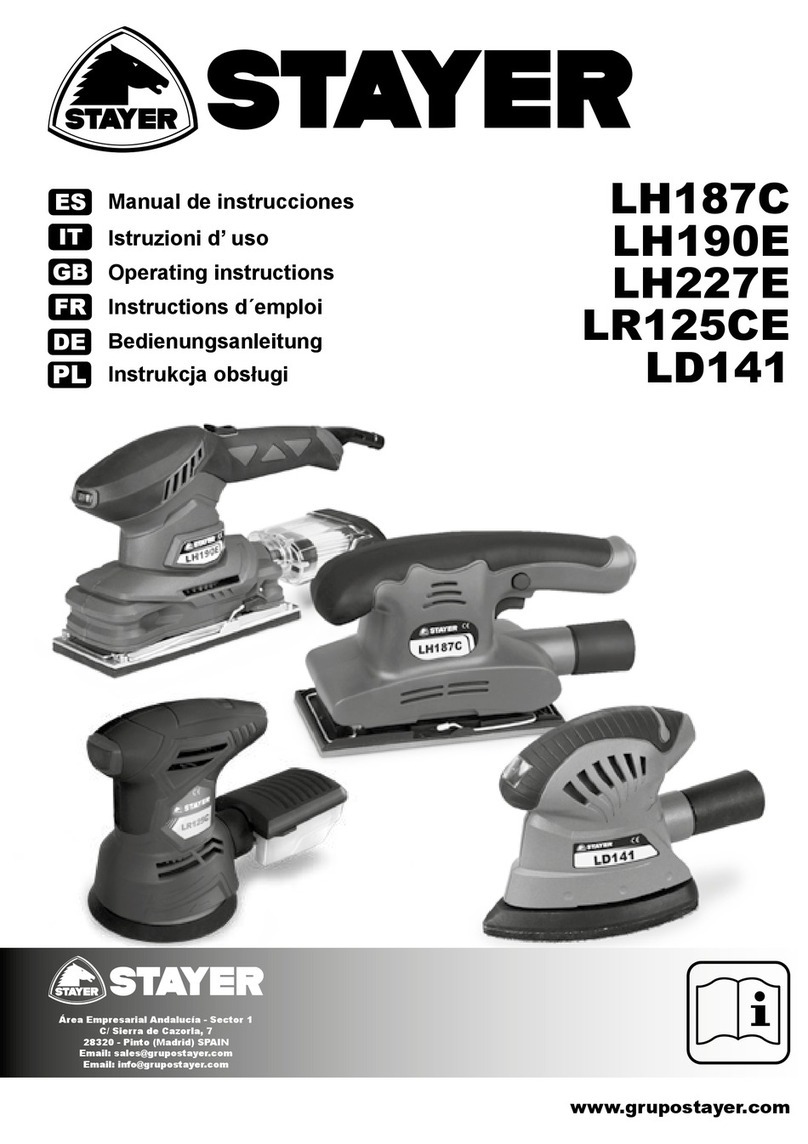
- 3 -
es
gb
¡Muchas gracias por la adquisición de un producto
STAYER! La lijadora para paneles de yeso está dise-
ñada para lijar paredes y techos hechos de paneles de
yeso. La Lijadora proporciona un acabado superior y
es más rápida que los métodos convencionales para
los trabajos en nuevas construcciones y obras de re-
novación. Está diseñada para trabajar en asociación
con una aspiradora para un mínimo de polvo y obte-
ner mejores resultados de lijado. La cabeza de lijado
rotativa permite excelentes resultados en un mínimo
tiempo y poco esfuerzo.
Este manual es acorde con la fecha de fabricación de
su máquina, información que encontrará en la tabla de
datos técnicos de la maquina adquirida, buscar actua-
lizaciones de manuales de nuestras maquinas en la
página web: www.grupostayer.com
Para asegurar el funcionamiento y rendi-
miento apropiados de su nueva máquina
y para salvaguardar su propia seguridad,
es imperativo que lea este manual de ins-
trucciones detenidamente antes de usar la
herramienta.
¡Sea especialmente cuidadoso en observar
todas las precauciones de seguridad! ¡Si no
observa estas precauciones podrá sufrir heri-
das graves o incluso morir!
EMBALAJE
Su LIJADORA STAYER le será entregada en
una caja de cartón protectora para evitar da-
ños durante el transporte.
El cartón es una materia prima básica y, por
lo tanto, reutilizable y apropiada para reciclar
(reciclado de papel usado).
1_INSTRUCCIONES GEENRALES DE
SEGURIDAD
Lea íntegramente estas advertencias de peligro e
instrucciones. En caso de no atenerse a las adver-
tencias de peligro e instrucciones siguientes,
ello puede ocasionar una descarga eléctrica,
un incendio y/o lesión grave.
2_INSTRUCCIONES ESPECIFICAS DE
SEGURIDAD
• Mantenga siempre las manos lejos de área en que
gira la cabeza de lijado.
• La respiración prolongada de polvo de lijado de pa-
neles de yeso puede afectar la función respiratoria:
- Utilice siempre una aspiradora con una bolsa apro-
bada para el polvo de yeso.
- Utilice siempre un aparato de respiración aprobado
para polvo y niebla.
• Lijar pintura a base de plomo es muy tóxico y no se
le debe intentar. Sólo se permite a profesionales con
formación especial y equipo para realizar esta tarea.
• Mantener siempre un apoyo adecuado y un buen
equilibrio. No exagere. Utilice un andamio adecuado.
• Al trabajar, utilice un equipo de seguridad adecuado.
• Importante: después de terminar la operación de li-
jado, apague el interruptor y espere a que se detenga
completamente la cabeza de lijado antes de dejar la
herramienta.
• Nunca utilice la herramienta en un área con sólidos,
líquidos o gases inamables. Las chispas del conmu-
tador o de las escobillas de carbón pueden provocar
incendio o explosión.
• Existen ciertas aplicaciones para las que se ha di-
señado esta herramienta. El fabricante recomienda
vivamente no modicar ni utilizar esta herramienta en
cualquier otro uso que no sea aquel para el cual ha
sido diseñada.
• Mantener siempre un apoyo adecuado y un buen
equilibrio. Una pérdida de control puede causar lesio-
nes personales.
• Mantenga el cable de alimentación lejos de la zona
de trabajo de la máquina. Lleve siempre el cable de-
trás de usted.
• Apague inmediatamente la máquina en caso de vi-
braciones inusuales u otra disfunción. Verique que la
máquina para encontrar la causa.
• El polvo que resulta del trabajo efectuado con esta
herramienta puede ser perjudicial para la salud. Utilice
un dispositivo de absorción de polvo, una máscara de
protección adecuada contra el polvo y elimine el polvo
depositado con una aspiradora.
3_INSTRUCCIONES DE PUESTA EN
SERVICIO
¡ADVERTENCIA! Para su seguridad, lea
atentamente este manual y las instrucciones
de seguridad antes de utilizar la máquina.
Preste siempre su herramienta eléctrica junto
con estas instrucciones.
COLOCACIÓN
Asegúrese de trabajar en una zona limpia, estable, y
con posibilidades de movimiento.
MONTAJE
Montaje manguera aspiración
Desenchufe la maquina.
La máquina viene equipada con un tubo de aspiración
de 4m y con una salida para conexión al aspirador
con el diámetro estándar de 38mm. Para conexiones
